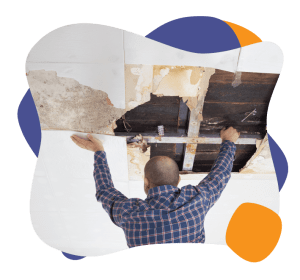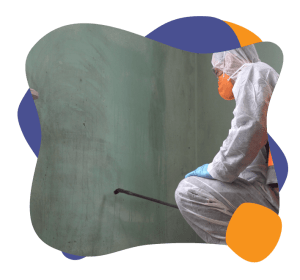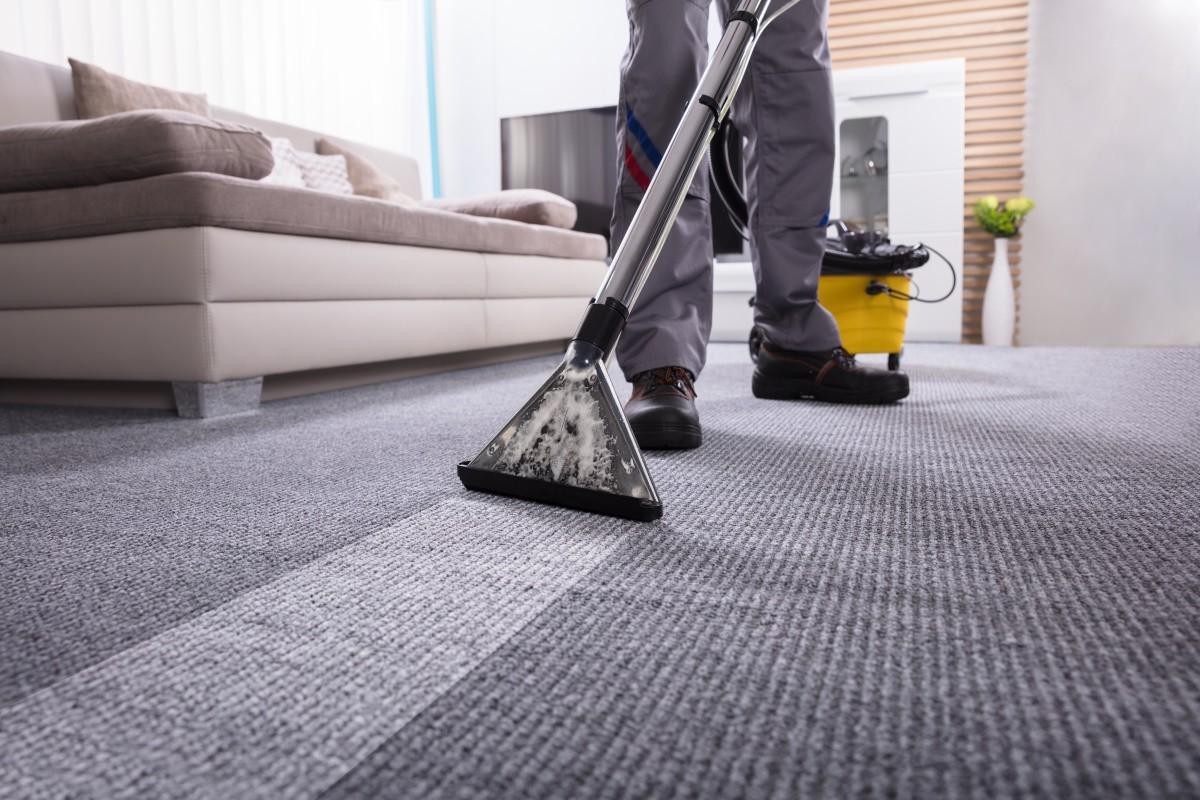One important chore stands out when you assess the damage caused by an unexpected deluge of water; you need to clean the mold after a flood. Mold, an undesirable result of too much moisture, can quickly and covertly establish itself, causing risks to both the structure and your health. While dealing with mold infestations may seem like a do-it-yourself effort, the value of experienced knowledge in the procedure cannot be emphasized
In this blog, the team at Enviropure Home Services would like to examine the critical need for flood mold remediation and the necessity of enlisting expert advice and support. We explain why hiring professionals is a smart choice, covering everything from health and safety concerns to efficient removal methods.
How Mold Grows After A Flood
Following a flood, mold can grow because of the abundant moisture, organic materials, and favorable temperatures that are present. This is how it usually goes:

Excess Moisture
Significant amounts of water are brought indoors during flooding. Walls, floors, carpets, and other porous materials may allow this water to seep inside of them, resulting in an atmosphere with high moisture content.
Organic Substances
Organic ingredients are necessary for mold to develop. These materials can consist of drywall, wood, paper, textiles, and other typical building supplies. These materials may become saturated during flooding, giving mold spores an ideal feeding supply.
Favorable Temperatures
Temperatures between 77°F (25°C) to 86°F (30°C) are ideal for mold growth. This temperature range applies to many interior spaces, particularly in the warmer months.
Stagnant Air
Doors and windows may be shut after a flood to stop further water infiltration, which may hinder airflow. High humidity mixed with stagnant air makes for the perfect environment for mold to grow.
Delayed Cleanup
Mold spores that are already present in the environment or that were brought in during the flood might start to germinate and proliferate if floodwater is not removed quickly and the afflicted surfaces are not fully dried.

Spore Activation
Everywhere, both indoors and outside, contains mold spores. They may get activated and begin to develop as observable mold colonies when they come into touch with water and organic compounds.
Why You Need to Clean Mold After A Flood
Following a flood, mold growth may have several detrimental effects on your house as well as your health. The following are some potential consequences of skipping mold removal after a flood:

Structural Damage
Wood, drywall, and insulation are examples of biological materials that mold may eat and destroy. This might cause your home or building’s structural integrity to deteriorate over time, necessitating expensive repairs.
Health Dangers
Mold produces airborne spores that can be breathed in. Mycotoxins (toxic compounds generated by some molds) and mold spore exposure can cause a variety of health issues, especially in those with allergies, respiratory diseases, or weakened immune systems. Nasal congestion, coughing, wheezing, skin discomfort, and eye irritation are just a few symptoms.
Increased Allergies and Asthma
Individuals with allergies and asthma may find it more challenging to breathe and carry out daily activities as a result of prolonged mold contact.
Reduced Indoor Air Quality
Indoor air quality can be drastically lowered by mold. Mold spores in the air can contribute to an unhealthy living environment and the musty smell associated with mold growth can linger.
Contamination Spread
If left uncontrolled, mold can spread to unaffected areas, creating a larger and more difficult cleanup job in the future.
Lower Property Value
The value of your house may be lowered if mold damage is severe and not properly repaired. If a house has a history of mold issues, potential buyers could be put off from buying it.
Legal and Insurance Issues
Insurance policies may have limitations on mold coverage, thus skipping mold remediation might prevent you from submitting insurance claims for flood damage.

Long-Term Costs
Delaying the removal may raise the expense of flood mold remediation in the future. The scale of the cleanup and restoration activities may get larger and more expensive as the mold grows and results in more harm.
How to Clean Mold After a Flood

Safety Measures
It is crucial to put safety first. Mold spores may be harmful to your health, especially if you have allergies or respiratory disorders. To avoid exposure, put on disposable gloves, safety goggles, and a N95 respirator mask.
Ventilation
To encourage cross-ventilation, open the doors and windows. This speeds up the drying out of the damaged region and lowers the number of mold spores in the air.
Remove Standing Water
Use a wet-dry vacuum to get rid of any standing water. Wet-dry vacuums can spread mold spores, so take care not to vacuum them up. Vacuum away from the building, outdoors.
Scrubbing
Follow the manufacturer’s recommendations when combining a water and detergent solution or a professional mold remover. Use a hard brush to clean any surfaces, walls, or objects that have mold growth apparent. To stop mold spores from landing on areas that have previously been cleaned, begin at the top and work your way down. Scrub any impacted surfaces very thoroughly until the mold is gone. After cleaning, thoroughly dry the surfaces by rinsing them with clean water.
Disinfection
After cleaning, disinfect the area to remove any last traces of mold spores. You can use hydrogen peroxide (3% concentration) or a solution of water and white vinegar (approximately 1 cup of vinegar per gallon of water). Spray or use a wipe to apply the solution to the surfaces, then let it air dry. Natural disinfectants like vinegar and hydrogen peroxide can aid in preventing the recurrence of mold.

Drying
To stop mold from coming back, proper drying is essential. Reduce humidity levels and make sure the environment is completely dry by using dehumidifiers and fans. Pay special attention to locations like basements, crawl spaces, and attics that are prone to holding moisture. Keep the space well-ventilated till the moisture levels are under control.
Why You Need Professional Help To Clean Mold After A Flood
In circumstances of substantial mold development or when dealing with certain forms of mold, having expertise, like that of Enviropure, is important to clean mold after a flood. This is why having specialist knowledge is crucial:
Safety and Health
When dealing with mold, experts are taught to employ the proper safety precautions and protective equipment. They take precautions to reduce the dangers to themselves and other building occupants’ health because they are aware of the possible health concerns linked to mold exposure.
Effective Cleanup
Professionals have the expertise and knowledge necessary to evaluate the severity of a mold infestation and create a thorough cleanup strategy. They are skilled at finding concealed mold development, which might be difficult for an inexperienced person to do.

Suitable Equipment
Specialized tools including HEPA (High-Efficiency Particulate Air) filters, air scrubbers, dehumidifiers, and protective clothing are frequently needed for mold removal. Professionals have access to these tools and are skilled in their usage.
Keeping Spread at Bay
Cleaning incorrectly might actually spread mold spores and exacerbate the issue. In order to avoid cross-contamination during the cleanup procedure, professionals are knowledgeable in containment measures.
Identification of Root Problems
To stop recurrence, experts can find and fix the root causes of mold growth, such as leaks or inadequate ventilation.
Thoroughness
Professionals are qualified to carry out a comprehensive cleanup, guaranteeing that all mold is effectively eliminated and that the afflicted surfaces are thoroughly dried and disinfected.
Knowledge of Regulations
There can be particular rules and restrictions for mold remediation in your area. Professionals can guarantee that the cleansing procedure conforms to legal standards because they are conversant with these restrictions.

Insurance Considerations
Professional mold remediation may be necessary in order for certain insurance plans to reimburse the expenses. Making sure you fulfil any insurance needs can be made easier by hiring experts to conduct the cleanup.
Enviropure Home Services – House Cleaning Services

Cleaning mold after a flood takes more than just a quick cleanup; it calls for a calculated and systematic strategy. Without a comprehensive approach to flood mold remediation, the after-effects could pose significant risks to health and safety. As such, it is crucial to seek out professional assistance with mold removal.
Please contact us when you need to clean mold after a flood. Enviropure Home Services is Ottawa’s premier provider of home cleaning solutions. Our mold removal services are effective in residential and commercial spaces. Engage our expertise and experience to protect your home or place of business and all residents concerned.



